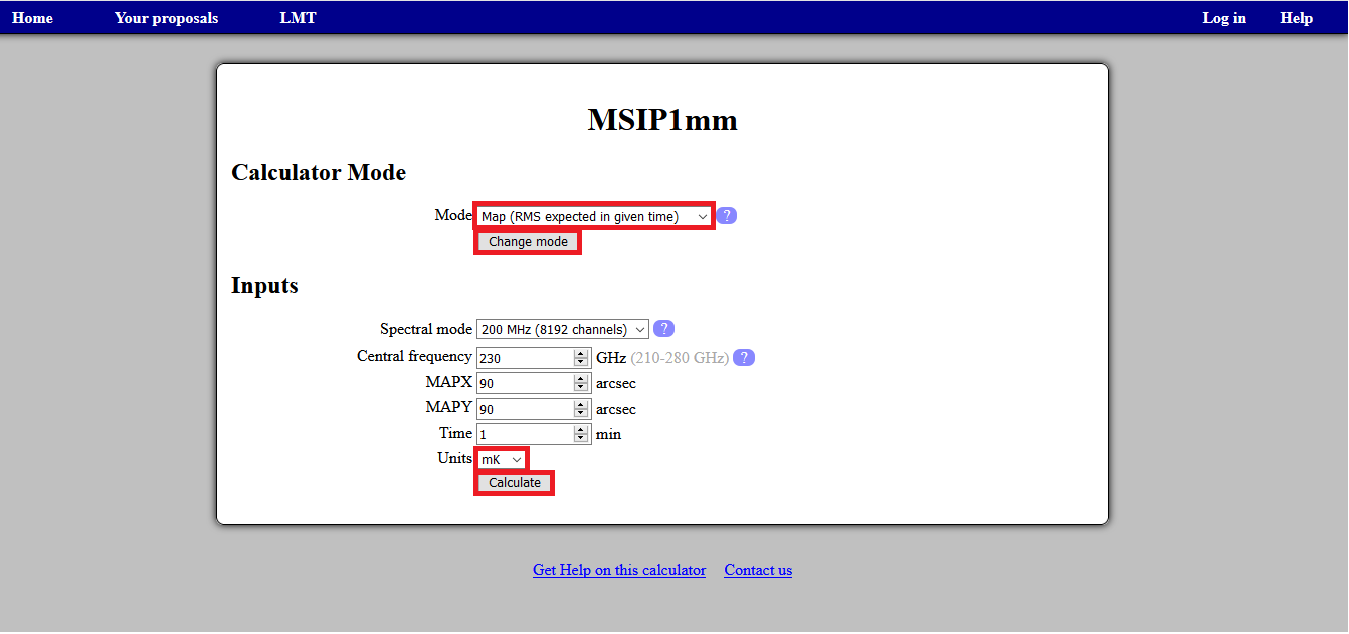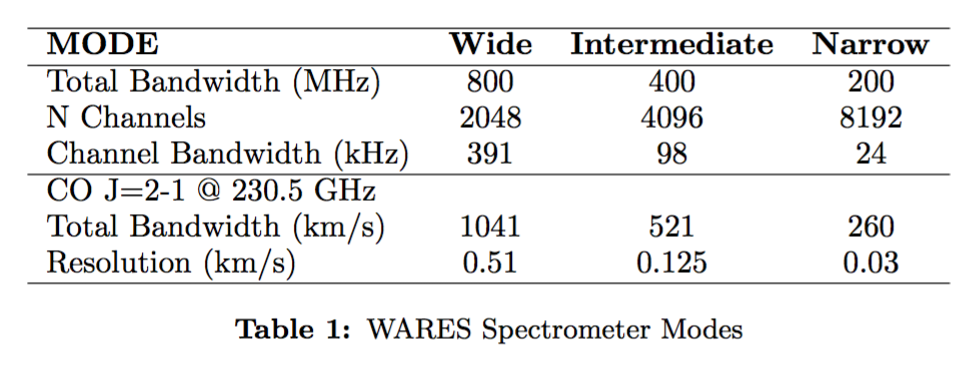MSIP1mm Sensitivity/Integration Time Calculator
This calculator can be used to estimate sensitivity or integration times for the Mid-Scale Innovation Program 1mm Receiver MSIP1mm on the 50-m LMT.
Receiver
The single-pixel 1mm receiver (or MSIP1mm) is a dual-polarization sideband-separation receiver that operates in the frequency range of 210 – 280 GHz. The receiver is primarily used for observations with the Event Horizon Telescope (EHT) array, but is also available for general astronomical use. The receiver uses super-conducting junctions, and features ALMA Band-6 mixer-preamplifiers. The cryostat is cooled to 4 Kelvin, and has a square corrugated feedhorn followed by an orthomode tranducer (OMT) which splits the two polarizations into two separate mixer-preamplifiers. Each of these polarizations further separate the upper and lower sidebands of the intermediate frequency (IF) of 4 – 12 GHz. In all four separate IF bands are available simultaneously and is fed into a spectrometer system. The orthogonal polarizations can be averaged together for each sideband. The receiver was designed and built at UMass, and provides characteristic receiver noise temperature of 60-75 K across the 210 – 280 GHz band. A flexible computer controlled local oscillator (LO) system allows tuning across the RF frequency range.
Calculation Modes
NOTE: The “Input parameters” section provides a description of each parameter required by the calculators.
The MSIP1mm calculator allows to choose between two different observing modes: 1) Position Switching (PS) Mode for pointed observations and 2) Map Mode designed for mapping extended regions of the sky. As described below, both calculators can be used to estimate the “RMS expected in given time” and the “Time required for target RMS”.
Position Switching (PS) Mode:
- RMS expected in given time: choose the spectral mode and provide your desired integration time in minutes. Press the ‘Calculate’ button to determine the sensitivity in the selected units (mK or mJy).
- Time required for target RMS: choose the spectral mode and provide your desired sensitivity (in order to change units press the ‘Units’ button and select between mK or mJy). Press the ‘Calculate’ button to determine the required integration time.
Map Mode:
Choose the spectral mode. Provide the central frequency in GHz and the size of the desired map in arcsec.
- RMS expected in given time: provide the desired integration time (in minutes) and press the ‘Calculate’ button to determine the sensitivity in the selected units (mK or mJy).
- Time required for target RMS: provide the desired sensitivity (in order to change units press the ‘Units’ button and select between mK or mJy). Press the ‘Calculate’ button to determine the required integration time.

For the Map Mode calculator, the spectral mode, central frequency and map size will define the time required to make a single map and its corresponding depth. The total time or final RMS is estimated in multiples (integer) of single map realizations. If the total time or final RMS required does not correspond to an integer number of maps, the calculator outputs the nearest options (rounded up). For reference, the calculator also outputs the required time to complete one single map and its expected depth.
If a project requires different transition lines to be targeted (and which do not fall within a single band width), integration times must be estimated for each transition and added to estimate the total time to be requested in the proposal.
You can find a description of the instrument and further documentation in the MSIP1mm.
Input parameters
MSIP1mm’s spectrometer can operate in three different spectral modes, which define the spectral band width and number of channels. The user will have to select between these three available Spectral Modes:

Central frequency [GHz] of your expected line, between 210 - 280 GHz
MAPX [arcsec]: Desired map size in the X direction (must be >=90 arcsec)
MAPY [arcsec]: Desired map size in the Y direction (must be >=90 arcsec)
TIME [min]: where the user gives a desired RMS to be reached and the required time is calculated.
RMS [mK or mJy]: where the user gives a proposed integration time and the corresponding RMS is estimated.